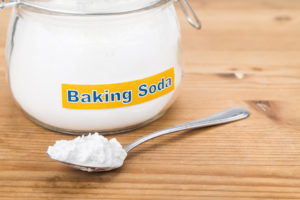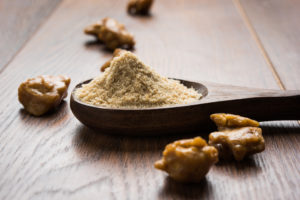All About Beans, cont.
Trouble Shooting
Cooking Beans in Hard Water

Hard water contains lots of calcium and magnesium and therefore may interfere with tenderization. How much of a problem this is depends on how hard your water is. In some cases beans can be simply uncookable. In this instance a small amount of baking soda can help. Adding 1/8 teaspoon per cup of beans to the soaking and cooking water will shorten the cooking time; with this small amount there will be no loss of thiamin and other nutrients, and the quality of flavour and texture is almost as good as beans cooked in soft water. Don’t use more than the 1/8 tsp baking soda or the beans will turn dark and mushy and their nutritive value will be lowered.
Another way to overcome the hard water problem is to stir-fry presoaked beans in oil for 10 minutes, then cook them in the usual manner. This shortens the cooking time, especially for soybeans. While you will be taking in a few more calories from the oil, this method is better than the baking soda method in terms of flavour and nutritive value.

Gaseous Emissions
If you eat beans only on rare occasions you may associate them with gas, an unpleasant initial side effect. Most people find this problem decreases as beans are eaten on a more regular basis. If you are concerned about flatulence it may be wise to increase your intake of beans gradually so your digestive system has time to adapt.
In the meantime, there are many things you can do to reduce or even eliminate the gas problem. Gas is caused by complex sugars in beans called oligosaccharides. When these molecules leave the upper intestine and enter the lower they are met by a large resident bacteria population – bacteria eat the oligosaccharides and in the process give off various gases, mostly carbon dioxide, as waste products.
While soaking is done to return moisture and reduce cooking time, it also removes these complex sugars that cause flatulence.
The following procedures can help make beans more digestible by reducing the oligosaccharides and/or breaking down the starches in the beans before ingesting:
- always discard soaking water;
- rinse soaked beans and cover with plenty of fresh water for cooking;
- cook beans thoroughly – discard cooking water and rinse cooked beans again;
- rinse cooked beans before adding to another dish for further cooking and/or melding of flavours;
- cook bean dishes with herbs that will aid digestion such as asafoetida, epazoate and fennel (the Japanese use a seaweed called kombu to improve digestion — kombu is added during the cooking of legume dishes, and is removed before the dish is served);
- always drain and rinse canned beans.
If you’re looking for a quick and easy way to combat gas, you can try a product called Beano. Available in most health food stores and some pharmacies, Beano comes in liquid or tablet form. A few drops (or a tablet) taken with the first mouthful of beans will help break down the sugars that cause flatulence. Caution: do not use Beano if you are allergic to penicillin.
Recipes – Click Here for all Bean & Lentil Recipes
References
Currie, Violet and Spicer, Kay: Full of Beans, Gordon Soules Book Publishers, 1993
Stone, Sally and Martin: The Brilliant Bean, Bantam Books, 1988
Vesanto, Melinda R.D., Davis, Brenda R.D., and Harrison, Victoria R.D.: Becoming Vegetarian, Macmillan Canada, 1996
Collins Gem Vegetarian Food, pocket reference book